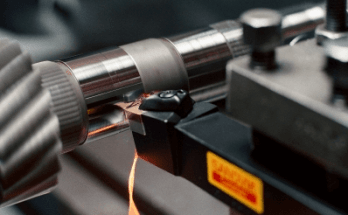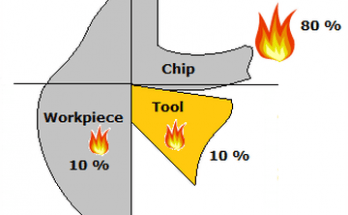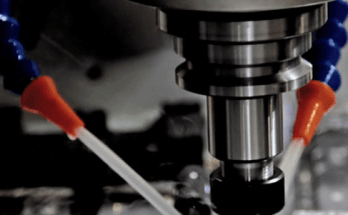Material Removal Rate (MRR) – what is it, how is it calculated ?
Here’s a brief explanation of what is Material removal rate, the Material removal rate formula for milling, and the Material removal rate formula for turning.
From month to month or quarter to quarter, as you buy more efficient (and expensive) machines, cutting tools and fixtures, you should be cutting more metal in the same time. How do you ensure that this is happening, and track your progress ? The MRR is a single number that enables you to do this. It is a direct indicator of how efficiently you are cutting, and how profitable you are.
MRR is the volume of material removed per minute. The higher your cutting parameters, the higher the MRR.
Material removal rate formula for milling
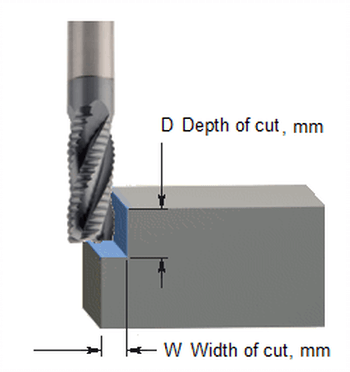
D: Depth of cut, mm.
W: Width of cut, mm.
F: Feed rate, mm/min
MRR = (D x W x F / 1000) cc/min.
Material removal rate formula for turning
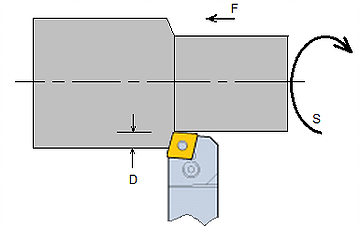
D: Depth of cut, mm.
F: Feed rate,mm/rev.
S: Cutting speed, m/min
MRR = D x F x S cc/min
Text and pics. source: CADEM NCyclopedia multimedia CNC training software.

Transform production and profits dramatically, in just a few months.
With a CNC machine monitoring system.
Etc
Makke ki Roti and Sarson ka Saag
This is the Hindi name for one of my favourite foods. It is a Punjabi dish, called Makke di roti te sarson da saag in Punjabi. Tasty, simple, healthy, filling, and very colourful on the plate.
Makke ki roti is roti made of corn (as against the usual wheat, hence the yellow colour of the rotis), and sarson ka saag is mustard leaves. The accessories could be raw carrot, radish, onion or chillies.
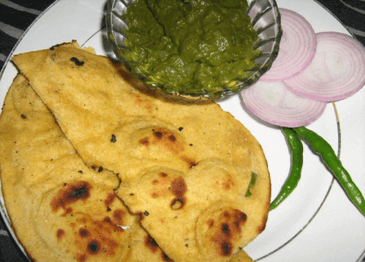

I was in Delhi recently for a few days, and really pigged out on this. The high point of my pigging out was in a tiny roadside eatery. I was chatting with the couple who ran the place, and they were happy to get a customer who was so appreciative of their food. They insisted that the makki ki roti had to be eaten with gur (jaggery) that was made on their farm in Punjab. That simple addition really took the food to another level of taste.

Winter is the only time of year that you get Sarson ka saag. Mustard is sown around October. It flowers between December and February, and is harvested soon after for the mustard seeds. A small percentage of the plants is cut before the seeds arrive, to add joy to the lives of lovers of Sarson ka saag.
